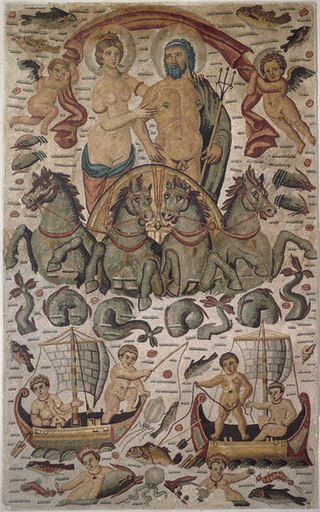
Pope Miltiades, also known as Melchiades the African, was the bishop of Rome from 311 to his death on 10 or 11 January 314. It was during his pontificate that Emperor Constantine the Great issued the Edict of Milan (313), giving Christianity legal status within the Roman Empire. The pope also received the palace of Empress Fausta where the Lateran Palace, the papal seat and residence of the papal administration, would be built. At the Lateran Council, during the schism with the Church of Carthage, Miltiades condemned the rebaptism of apostatised bishops and priests, a teaching of Donatus Magnus.

Pope Marcellinus was the bishop of Rome from 30 June 296 to his death in 304. A historical accusation was levelled at him by some sources to the effect that he might have renounced Christianity during Emperor Diocletian's persecution of Christians before repenting afterwards, which would explain why he is omitted from lists of martyrs. The accusation is rejected, among others, by Augustine of Hippo. He is today venerated as a saint in the Catholic Church and in the Serbian Orthodox Church.

Donatism was a Christian sect leading to a schism in the Church, in the region of the Church of Carthage, from the fourth to the sixth centuries. Donatists argued that Christian clergy must be faultless for their ministry to be effective and their prayers and sacraments to be valid. Donatism had its roots in the long-established Christian community of the Roman province Africa Proconsularis and Mauretania Tingitana, in the persecutions of Christians under Diocletian. Named after the Berber Christian bishop Donatus Magnus, Donatism flourished during the fourth and fifth centuries. Donatism mainly spread among the indigenous Berber population, and Donatists were able to blend Christianity with many of the Berber local customs.
Novatianism or Novationism was an early Christian sect devoted to the theologian Novatian that held a strict view that refused readmission to communion of lapsi. The Church of Rome declared the Novatianists heretical following the letters of Saint Cyprian of Carthage and Ambrose written against them. Novatianism survived until the 8th century.
Ex opere operato is a Latin phrase meaning "from the work worked" that, in reference to sacraments, signifies that they derive their efficacy not from the minister or from the recipient, but from the sacrament considered independently of the merits of the minister or the recipient. According to the ex opere operato interpretation of the sacraments, any positive effect comes not from any human worthiness or faith, but from the sacrament as an instrument of God.

Cirta, also known by various other names in antiquity, was the ancient Berber, Punic and Roman settlement which later became Constantine, Algeria.

Donatus Magnus, also known as Donatus of Casae Nigrae, was the leader of a schismatic Christian sect known as the Donatists in North Africa, Algeria. He is believed to have died in exile around 355.

Traditor, plural: traditores (Latin), is a term meaning "the one(s) who had handed over" and defined by Merriam-Webster as "one of the Christians giving up to the officers of the law the Scriptures, the sacred vessels, or the names of their brethren during the Roman persecutions". It refers to bishops and other Christians who turned over sacred scriptures or betrayed their fellow Christians to the Roman authorities under threat of persecution. During the Diocletianic Persecution between AD 303 and 305, many church leaders had gone as far as turning in Christians to the authorities and "handed over" sacred religious texts to authorities to be burned. Philip Schaff says about them: "In this, as in former persecutions, the number of apostates who preferred the earthly life to the heavenly, was very great. To these was now added also the new class of the traditores, who delivered the holy Scriptures to the heathen authorities, to be burned".

Assuras, sometimes given as Assura or Assur, was a town in the Roman province of Proconsular Africa.
Mensurius was a bishop of Carthage in the early 4th century during the early Christian Church.

Téboursouk is a town and commune in the Béja Governorate, Tunisia. It is located at 36° 27′ 26″N, 009° 14′ 54″E.
Secundus of Tigisis was an early church leader and primate of Numidia. He was a leading organiser of the early Donatist movement in Carthage.

Majorinus was the leader of a schismatic Christian sect in Roman North Africa known as the Donatists.
Felix, Bishop of Aptunga, in proconsular Africa was a 4th-century churchman, at the center of the Donatist controversy.
Parmenian was a North African Donatist bishop, the successor of Donatus in the Donatist bishopric of Carthage. He wrote several works defending the rigorist views of the Donatists and is recognized as "the most famous Donatist writer of his day", but none of his writings have survived.
Macomades was a Carthaginian and Roman city in North Africa. It was located near present-day Oum-El-Bouaghi, Algeria
The Second Council of Cirta was a conference of Bishops, held in June 412, at Cirta in Roman North Africa, and was debated between the Catholics led by Augustine and the Donatists led by Silvanus of Numidia. It is notable as the origin of the Catholic dogma that "There is no salvation outside the Catholic Church".
The First Council of Cirta was a synod of bishops called by Secundus of Tigisis, the primate of Numidia in AD 303 or 305. It took place in the city of Cirta.
Donatus of Bagaï, also known as Donatus of Aurasium, was an ancient Donatist bishop and martyr whose life and actions played a significant role in the complex religious landscape of 4th century Numidia. Despite being primarily known through hostile reports, notably found in Optatus' "Contra Parmenianum Donatistam" Donatus of Bagai left a lasting impact on the Donatist movement.

Marculus of Thamugadi or simply Marculus was a prominent bishop and Christian martyr venerated by the 4th-century North African Donatist Church.










